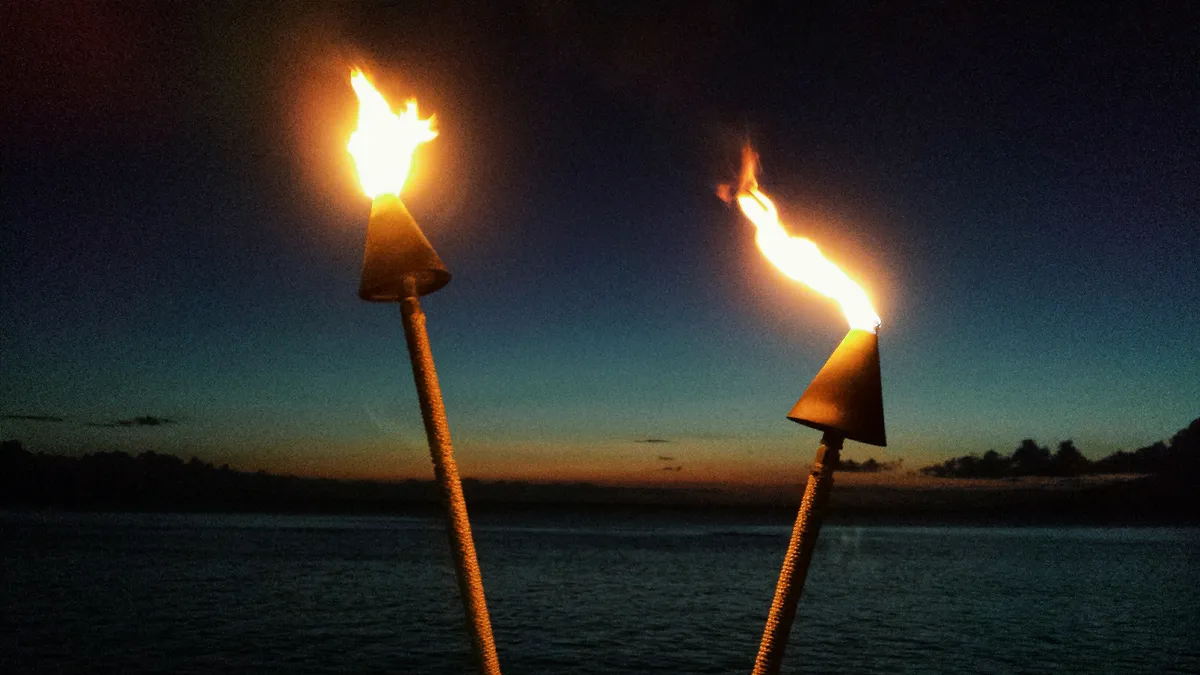Dive Brief:
- The Hawaiian Public Utilities Commission has accepted a plan filed by the state's largest utility Hawaiian Electric Co. (HECO), outlining how it will reach 100% renewable energy resources by 2040 — five years ahead of the state's goal.
- HECO's latest iteration of its Power Supply Improvement Plan (PSIP) update was accepted by the PUC on July 14, and it outlines the work to be done by Hawaiian Electric, Maui Electric and Hawai‘i Electric Light. Along with acquiring almost 400 MW of renewable generating capacity, the plan includes adding energy storage and other grid technologies to aid resiliency, and assumes the continued growth of private rooftop solar.
- The PUC directed the utilities to file a plan outside of the docket to detail its planning approaches and schedule for the next round of resource planning. Regulators also noted several areas of concern within the plan, and called for more analysis in future planning proposals to check on the technical feasibility of integrating grid technologies as well as the impact to consumer bills.
Dive Insight:
Hawaiian Electric is planning to get ahead of the state's renewable energy goal, and the acceptance of the utility's plan is a significant milestone that gives certainty to near-term actions.
Hawaii wants to reach all-renewable energy by 2045, and this is HECO's third attempt at developing a 100% renewable energy plan. Regulators rejected the first in 2015 for a lack of specificity and the second version, filed in April 2016, was rendered moot when the PUC turned away NextEra Energy's bid to buy the utility.
In its statement, HECO said its utilities exceeded the state’s 2015 renewable energy target and indicated they are on track to exceed the state’s renewable energy targets in 2020, 2030 and 2040. The utility said it will attain a renewable portfolio standard of 48% by 2020 without imported liquefied natural gas — once again ahead of the mandated 30% goal.
The PSIP aims for the addition 360 MW of grid-scale solar, 157 MW of wind energy, and 115 MW from demand response programs.
In their order accepting HECO's plan, Hawaii regulators wrote the "PSIPs in the Report reflect significant improvements over the previous PSIPs filed in this docket" but noted several areas of concern, including impacts on consumer bills and the aggressive procurement of renewable energy and energy storage systems without sufficient analysis. Regulators also expressed concern over HECO's ambitious plan to meet the 100% renewables goal five years early.
"The commission commends the Companies' commitment to achieving the RPS [Renewable Portfolio Standard] ahead of schedule," the regulators wrote. "Nevertheless, the commission has some concerns regarding the technical feasibility and economics of the long-term resource plan for each Island."
The PUC said it will open a new docket to address HECO's ongoing plans to achieve the renewable energy goals.
HECO's plan calls for energy storage and other grid technologies to enable a high penetration of renewables. The utility expects continued growth of private rooftop solar, and describes the work to "expand and upgrade grid infrastructure and to use the newest generations of inverters, control systems and energy storage." Ultimately, HECO will integrate about 165,000 private systems by 2030 — more than twice of the current total of 79,000.
Long-range plans for each of the five utility island systems includes Battery Energy Storage Systems to provide load shifting and ramping assistance. HECO said it will continue studying the possibility of using them to integrated distributed resources. On Maui, the utility will consider aggregated demand response resources as an alternative to transmission expansion.















